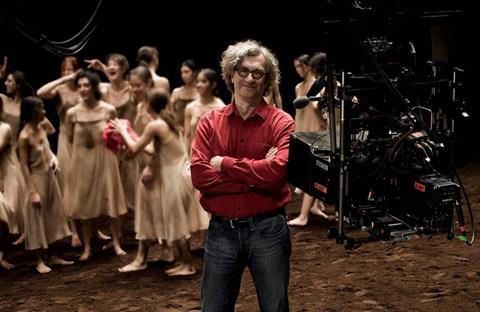Wim Wenders 3D dance project Pina, about the legendary dance choreographer Pina Bausch who died before production began, is about to enter its second phase of shooting.

German director Wim Wenders had been looking for an opportunity to make a film with world renowned choreographer (and old friend) Pina Bausch for years; but it was only after seeing the latest 3D technology in action he was convinced that it would be possible.
“The two-dimensional cinema screen is just not capable of capturing Pina Bausch’s work, either emotionally or aesthetically,” says Wenders. “When I watched her dance for the first time 25 years ago, I was able to understand human movement, gestures and feelings in a whole new way. 3D gives us the possibility of taking the audience directly onto the stage, into the middle of the event.”
The film’s producer Gian-Piero Ringel, who previously collaborated with Wenders on his 2008 drama Palermo Shooting, pinpoints a particular screening of U2 3D at the Cannes Film Festival in 2007 as the moment that Wenders realised that the project could work. Thanks to 3D technology, says Ringel, it would be possible to capture Pina’s choreography on film and “show the power and energy of her work”.
Still, finding a time to shoot Bausch’s famous dance company, The Wuppertal Dance Theatre, proved to be more difficult, given its busy international touring schedule, together with its local performances at the Opera House in Wuppertal, North Rhine-Westphalia.
With a “time slot” for shooting finally secured for September 2009, Wenders went about raising funding for the €3m film, garnering support from the Filmstiftung NRW (€650,000), Medienboard Berlin-Brandenburg (€200,000), the German Federal Film Board (FFA) (€250,000) and the German Federal Film Fund (DFFF) (€463,002).
Officially a German-French co-production between Wenders’ Berlin-based Neue Road Movies and France’s Eurowide, the project qualified for €350,000 from France’s CNC through the German-French Film Committee, which was set up to encourage co-productions between the two countries. The project was also made “in association with” Bausch’s Dance company. Broadcaster ZDF-Arte has acquired the TV rights.
With everything in place and production due to start in three months, the project was thrown into turmoil by the unexpected death of Bausch in June last year, shortly before her 69th birthday. Wenders initially called a halt to production, but by the end of July he announced that the filming would go ahead.
“We were in the middle of tests with the 3D cameras when we received the news of Pina’s passing,” Ringel says. “Later in the summer, after having been encouraged by her son Rolf-Salomon, the dancers and the company, we decided to restart the production.”
He admits that following her untimely death, it became clear that the film would have to evolve from the original concept. “The plan had been to observe Pina during her work. Now we intend to use archive material of her and shoot with the dancers outside of the Tanztheater. These will be bridging elements between the individual dance pieces.”
With the project’s partners supportive of the new concept, the first section of the shoot took place in October 2009 at the Opera House in Wuppertal, while the remainder is due to get underway next month. The completed film will feature extracts from four of Bausch’s dances: Café Müller, which was first performed in 1978, The Rite Of Spring from 1975, Full Moon from 2006 and Kontakthof from 1978.
Given that this is Wenders first foray into 3D film-making, he enlisted a special “3D producer” to oversee this element of the shoot. “We spoke with lots of people who had worked in 3D about the extensive groundwork undertaken in preparation for Pina,” recalls Erwin Schmidt, who is based at Wenders’ Neue Road Movies.
“But many of these had experience of shoots done in the classical way, with sets and controlled conditions. The particular nature of this project, though, was that we were bound months ahead by this tight timetable of mere hours for shooting. We had to shoot during the evening performances and had only that single chance to get a take,” he adds.
Post-production is expected to continue to the end of this year, with a possible premiere at a festival in early 2011. The Pina team is remaining tight lipped as to whether that will be Berlin, although it would seem the obvious choice given that it also happens to be the director’s home.
UK-based HanWay Films is handling international sales. The company has an ongoing relationship with Wenders having sold Palermo Shooting and Don’t Come Knocking, as well as representing a back catalogue of 11 of his titles including Paris Texas and The American Friend.
With pre sales to Germany (NFP) and France (Les Films du Losange for France), HanWay plans to show the first footage of the film at the Marché du Film in Cannes in May to woo more buyers.



















No comments yet